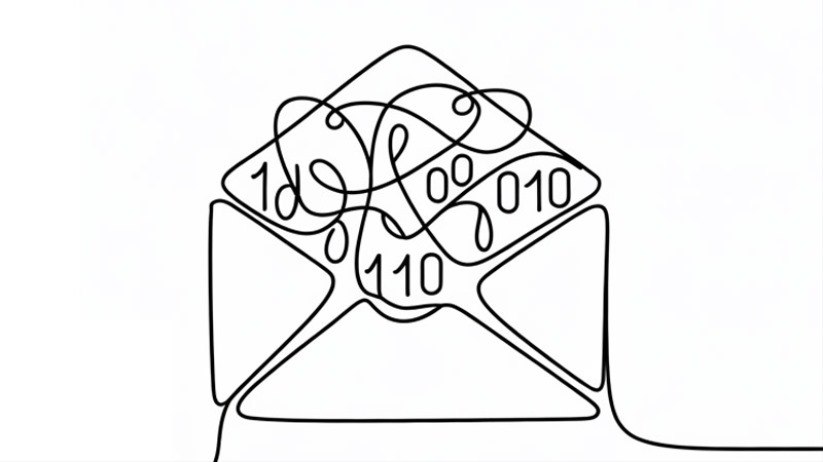Some emails land perfectly. They show up in the right inbox, at the right time, with the right tone. They don't feel forced or robotic.
Some emails land perfectly. They show up in the right inbox, at the right time, with the right tone. They don't feel forced or robotic. They feel like someone actually thought about what you might need — and that's why you open them.
Behind every message like that, though, lies a mountain of invisible prep work. Clean data, smart systems, and careful timing make everything else possible. Yet most teams skip those steps and wonder why their campaigns fall flat.
The truth is simple: great outreach isn't a matter of luck or wordplay. It's a system. And that system runs on two key elements — reliable cold email software and precise email verification. Together, they keep your outreach consistent, human, and actually seen.
Why deliverability is your real KPI
Marketers love to talk about conversions, replies, or demo bookings. But none of those numbers matter if your emails never reach an inbox. Deliverability decides whether your campaign even gets a chance to perform.
It's shaped by sender reputation, domain setup, and — most importantly — the health of your contact list. When you send to invalid or inactive addresses, you signal to email providers that you're careless. Too many signals like that, and they'll start treating you like spam — no matter how legitimate your message is.
Here's what experienced teams do differently before hitting send:
- Warm up sending domains slowly, building trust with inbox providers.
- Verify every address through anemail verification tool to remove invalid, disposable, or risky emails.
- Monitor bounce rates closely to detect reputation issues early.
- Personalize messages so they're clearly not automated spam.
It's not glamorous work. But it's what separates campaigns that vanish from those that convert.
When automation meets intention
In the early days of cold outreach, the formula was simple: send more emails, get more results. It worked — until filters got smarter, users got wary, and inboxes got full.
Today, volume alone is a liability. Modern outreach is about precision — the right person, the right tone, the right moment. That's whatcold email software enables. It automates the repetitive work while preserving the human touch that makes people reply.
Done right, it helps you:
- Scale conversations, not spam. You can send to hundreds of leads with tailored messaging that still feels one-to-one.
- Track what matters. Every open, click, and reply becomes data for improving your next campaign.
- Follow up intelligently. Automated sequences ensure no prospect gets forgotten, but no one feels hounded either.
Automation isn't about replacing empathy; it's about freeing up space for it. When you stop juggling spreadsheets and manually sending emails, you can focus on what really moves the needle — relevance.
A story that almost ended in spam
A few years ago, a small SaaS team thought they were doing everything right. They scraped a few thousand contacts, wrote clever copy, and hit send. The first wave went out fine, but then something strange happened — silence.
No replies. No opens. Then bounce notifications started piling in. Within days, Gmail began throttling their messages, and their company domain was suddenly on a blocklist.
It wasn't their writing. It was their data. Nearly a third of the addresses on their list were invalid or inactive. They were shouting into a void.
When they rebuilt their process — verifying their emails, cleaning their lists, and sending through proper cold email software — their numbers flipped. Bounce rates dropped below 2%, and reply rates tripled. The same copy, the same audience — just executed properly.
They didn't change what they said; they changed how they sent it.
Myth buster: The biggest lies about cold outreach
Let's pause for a moment and clear up a few myths that still trip up marketers and founders.
Myth #1: 'Cold emailing doesn't work anymore.'
False. What doesn't work is sending generic, unverified, high-volume emails with zero personalization. Modern tools make it easier than ever to send thoughtful, data-driven outreach that gets replies.
Myth #2: 'More emails = more replies.'
Also false. More bad emails just destroy your domain faster. The smartest teams sendfewer emails tobetter contacts — clean, verified, and relevant.
Myth #3: 'You can fix deliverability later.'
Once your domain gets flagged, recovery takes months. Reputation isn't a switch; it's a score that must be protected from day one.
The pattern is clear: the shortcuts that promise quick wins usually lead to long-term damage.
The small details that make a big difference
Email isn't complicated — it's meticulous. The tiny technical details most teams ignore are exactly what make or break deliverability.
Authentication protocols (SPF, DKIM, DMARC) tell inbox providers who you are. Consistent sending times build credibility. Avoiding spam-triggering words in your subject line matters more than you'd think. And maintaining healthy engagement — opens, replies, positive signals — trains algorithms to trust you.
But the easiest win? Keeping your list clean. When every contact on it is verified, you eliminate half of the risks that tank outreach performance. It's the kind of foundational hygiene that pays off in silence: fewer bounces, fewer blocks, and fewer late-night deliverability nightmares.
What a winning outreach process looks like
A high-performing campaign doesn't start with copywriting; it starts with structure. Teams that consistently land in inboxes follow a simple pattern that looks something like this:
- List research and segmentation. Who are you contacting, and why should they care?
- Verification and hygiene. Run every contact through a verifier before import.
- Domain preparation. Warm up your email accounts gradually over days or weeks.
- Campaign setup. Build multi-step sequences with logic based on opens or replies.
- Testing and observation. Track engagement, pause what underperforms, and adjust tone or timing.
It's not revolutionary — just responsible. The teams that treat outreach like an experiment, not a lottery, are the ones that eventually scale it into a predictable growth channel.
Where most teams go wrong
The most common mistakes aren't creative ones — they're operational. Teams rush to send before their domain is ready, upload unverified lists, or forget to segment their audience. The result is always the same: a drop in deliverability and an inbox full of automated rejections.
Here's what to avoid if you want to stay in the inbox long-term:
- Sending from brand-new domains with zero warm-up history.
- Ignoring bounce notifications or 'soft fail' reports.
- Reusing flagged IPs or overlapping personal and campaign accounts.
- Treating follow-ups like reminders instead of opportunities to add value.
- Relying on templates without personalization or testing.
The technical side might feel boring, but it's your insurance policy. It protects your effort, your brand, and your domain reputation from slipping quietly into spam filters.
The human factor still wins
Even with perfect data and great systems, people reply to people — not machines. No one wants to read a message that sounds like a pitch deck. The best cold emails sound like real conversations, written for one person, not a segment.
This is the paradox of modern outreach: automation only works when it doesn't feel automated. The right technology gives you scale, but the right words give you connection. You need both.
A well-run campaign looks like an ecosystem: clean data feeding into smart automation, balanced with genuine human tone. That's where outreach stops feeling like a task and starts creating relationships.
A quick note on trust
Trust is the ultimate deliverability signal. Not just with inbox providers — with people. Every small decision builds or erodes it: how transparent you are in your signature, how respectful you are with timing, how quickly you stop sending when someone unsubscribes.
Most teams think about trust as something to win during a sales call. In reality, it starts with the very first message. When you approach outreach as relationship-building rather than lead harvesting, everything changes — tone, pacing, and results.
Recipients can feel the difference between an automated blast and a crafted message. And inbox filters, funny enough, can sense it too.
The new philosophy of outreach
Cold email isn't dying; it's evolving. The wild west days of scraping lists and blasting generic pitches are gone. The future belongs to marketers and founders who see outreach as long-term reputation management — not a quick acquisition tactic.
They invest in setup. They prioritize deliverability. They verify, automate, test, and learn. Over time, they build credibility that compounds, campaign after campaign.
Because once a domain earns trust — from inboxesand from people — every message gets easier to deliver and easier to read.
The takeaway
Success in cold outreach isn't about finding the perfect line or clever subject. It's about showing discipline in the invisible layers of your process.
Do the groundwork others skip. Keep your lists clean. Use the right tools for scale. Protect your reputation like it's an asset. Because it is.
And remember — every email you send says something about you, even if no one replies.
So make sure it's worth sending.

